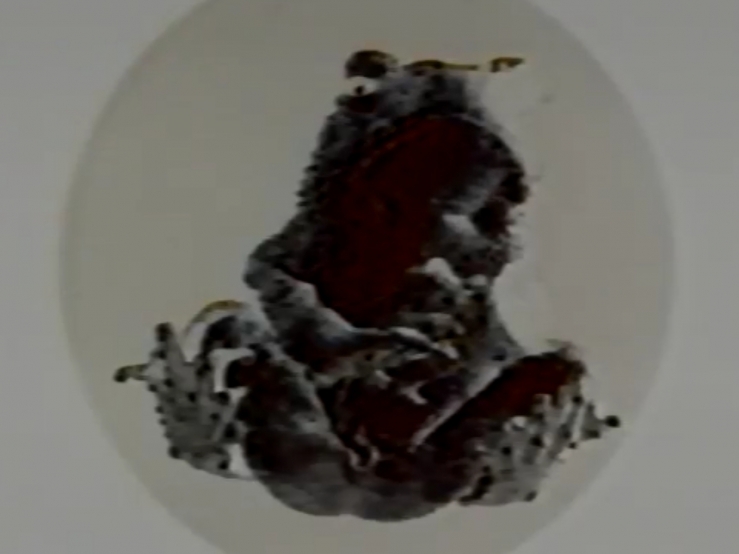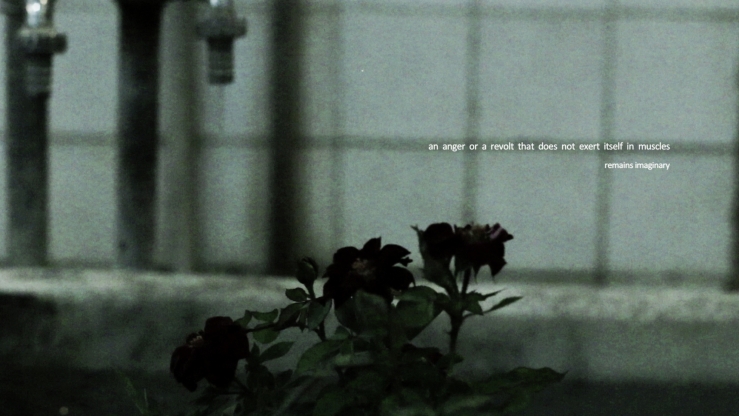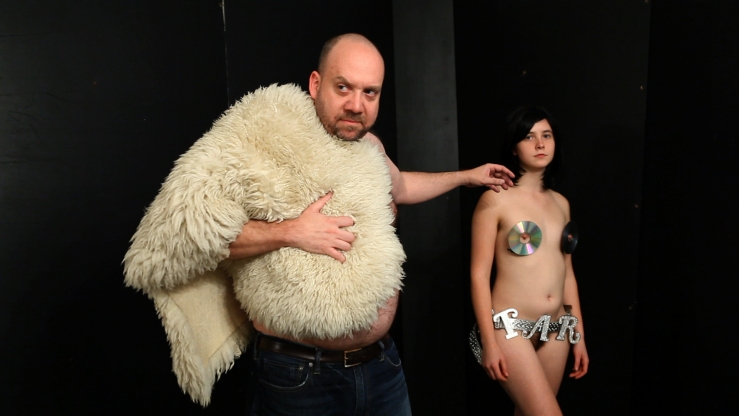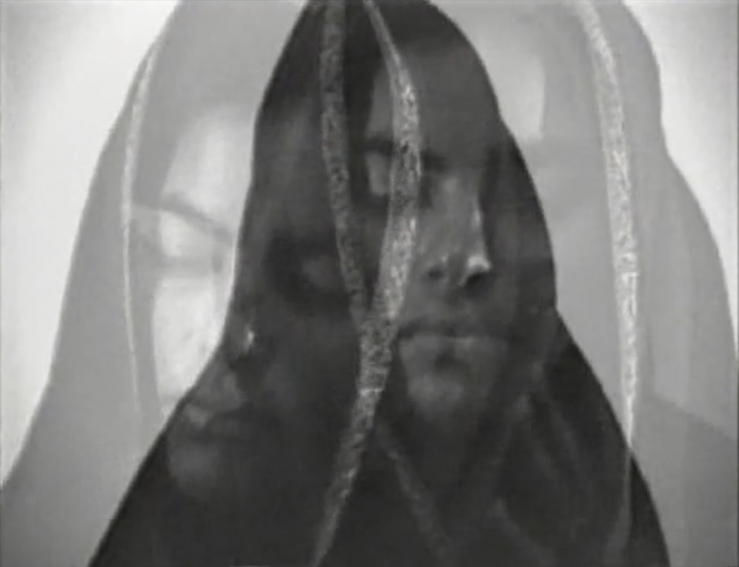Jättiläiset (Giants)
Two women fight on the beach. They wrestle, pull at each other’s clothes and hair, and try to put the other in a headlock. Their faces are contorted. Sweat covers their brows. Strained breathing noises and loud puffing can be heard. A moving camera from a slightly low perspective records their wrestling match. From this perspective the battling women’s bodies take on almost monumental size. Actually, they are just two normal people wrestling. Still, their battle acquires the aura of the heroic through its dramatic film portrayal. With the setting of the endless sea and the gray overcast sky behind them, their fight seems like a contest between archaic giants.
In her video Giants, Fanni Niemi-Junkola takes up a well-known art historical motif: the physical contest between heroes. The wrestling match between athletic men has been a popular subject since renaissance. Whether it be Hercules wrestling with the giant Antaneus (on a Mantegna student etching, approx. 1490), naked bodies knot into a tangled snarl of tense muscle in a battle with the centaurs (like in Michelangelo’s relief of 1492) or in the battle of the gods of the sea (in an etching by Mantegna, approx. 1485) the sea itself seems to produce the eternal conflict between human beings: in these motifs, the contest of men is constantly raised to the point of being cult. The modern age also cultivates this cult. Max Beckmann’s painting Rivals (1908) for instance shows two men fighting out a wrestling match, bare-chested at the seaside and with a gray, overcast sky in the background. Secondary literature traces Beckmann’s choice of a motif back to the readings of Schopenhauer, Nietzsche and Darwin and interprets the image as the symbolic representations of an existential fight for survival – amongst men, of course.
Female figures seldom play an active role in these battle scenarios – unless they are the cause of the conflict or the prize to be won. Occasionally a Sabine is robbed or a Helena is fought for. A wrestling match between women could only be found in this tradition with difficulty. Usually, the heroic contest motif simply serves to glory social competition between men as a 'battle of the elements' or as the expression of supposedly eternal laws of raw nature. In the media images of the present, the physical battle between women is also hardly (if ever) portrayed as heroic. The most prominent example is probably that of mud wrestling: here, women are indeed shown in the ring, but their battle is staged as a mud fight for self-degradation in order to satisfy the male audience’s voyeurism.
Fanni Niemi-Junkola takes up these conventions of the image and aims at subverting them. In Giants, she uses all the tricks of film staging to depict the women’s battle as a dramatic event according to classical models. By putting the sea in the background, she creates the atmosphere of wild, untamed nature. She plays with the aura of the heroic, yet her portrayal remains free of ideologies. The battle of her 'giants' has no clear motive, its finale is not mythological preordained, and it also symbolizes no certain idea of morality. Surprisingly, Fanni Niemi-Junkola succeeds in creating a portrayal of female corporeality beyond all common stereotypes by appropriating and re-interpreting a conventional motif. (VIDEONALE.9 catalogue)
About the video
About the artist
- 1962 in Tampere, FIN.
Studied at the Glasgow School of Art, Glasgow, GBR, and the Turku School of Art, Turku, FIN











